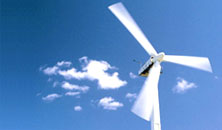There remain some, but very few, marketers today that can deny digital marketing as part of the mix. None-the-less, their online spend (as a percent of their overall budget) remains miniscule; it's important that we understand the reasons for this, and put forward solutions to win a greater share of the budget that goes on TV.
Pre dot-bomb era, "advertising on the internet" meant "banner ads" - the letterbox shape ads you see at the top of almost all commercial web pages today. Back then we could command lucrative rates for these banners which unwittingly provided much of the fuel for the venture capital boom on the web and subsequent poor press for the industry.
To add insult to injury, and because relative to a TV or Magazine ad the banner is small and easily ignored, "branding advertisers" came to the conclusion that banners were not the most effective vehicle for branding. Likewise, "direct sales advertisers" came to feel that the response rate for banner ads was low. Clicks didn't hold much value because the vast majority of those click-throughs didn't convert to sales. To compound the problem there was an incredible glut of internet advertising space and the rates paid for banner advertising began to plummet.
After many years of being knocked around by agencies and advertisers demanding lower and lower rates for ad inventory, it's good to report that some of the larger Irish online publishers, who invested in content, are currently experiencing near sold out inventory situations in certain areas for certain ad formats. The trend of selling audiences rather than impressions is gathering momentum. New ad formats and research tools like the JNIR are qualifying the extent and breadth of audience.
As it became increasingly obvious to many publishers that advertising won't exclusively sustain their working capital requirements; two distinctly different economic trends across the web emerged:
-
At the risk of losing their audience overnight, sites asked users to pay a fee to subscribe to all or parts of their site.
-
Free sites are running increasingly intrusive on-line ads. There are now ads that pop-up or under, ads that play music and ads that move across the screen.
Despite recent evidence that "pop" formats do not engender positive brand feelings amongst consumers, it's got to be said that demand for pops is driven almost exclusively by ad agencies in the belief that they'll generate the most clicks. That they engender such strong feelings, clearly an ad unit that promises a strong direct response with a positive brand presence is what's needed.
Globally the Internet industry is very excited by the latest format which is the Unicast Video Commercial. This is basically a broadcast quality ad that runs in a full screen pop-up window which enables TV advertisers to use the asset they value most - but with absolutely no compromise in quality irregardless of connection. This effectively allows marketers to:
-
Open up an entirely new distribution channel for the kind of advertising they have used effectively for 40 years.
-
Reach a high quality Internet audience at a time when television viewing is at the lowest point in the past decade.
-
Take advantage of the unique capabilities of the medium and combine interactivity to their TV advert.
-
Lets their agencies use exactly the same video and audio toolset they have always deemed most effective.
-
They can show different ads to the audience rather than the repeating the same ad again and again like on television.
-
Unlike Television, the audience is available during the day-time.
One of the reasons for this being so technically different from every format that has been seen before is that it was developed by Unicast in collaboration with Microsoft. This means it does away with the annoying buffering that can interrupt streaming video, even on broadband connections. Try it on your 28k modem from Unicast.com to see for yourself.
Unlike banners there is a finite amount of inventory available for the video commercial which will keep the prices up for publishers. With very high response and conversion rates, undisputed branding power and (due to their limited supply) higher prices, they would also appear to address some of the marketing opportunities that the Internet presents.
The best bit is that Dynamic Logic Research on the Video Commercials found that only 27 percent of consumers found the Video Commercial annoying which is a significantly smaller percentage than the 38% who were annoyed by Television advertising.
That said, it remains to be seen if this will be enough for the few Marketers who continue to deny the inclusion of digital because their entire budget was allocated to other media. Maybe they'll take another look at our recent improvements and include digital to the mix?

